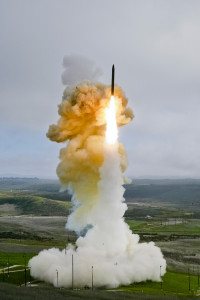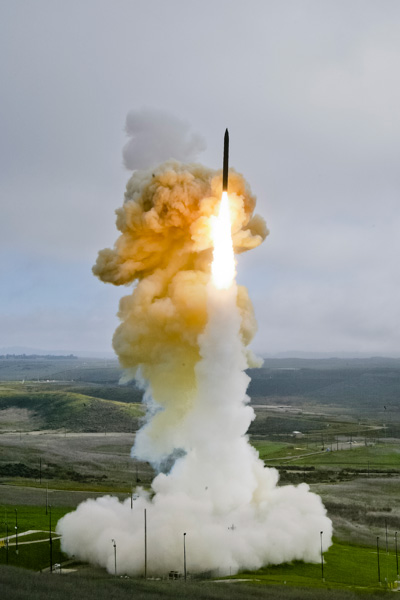
While the US administration openly stated confidence in its Ground Based Interceptors (GBI), research analysts from the Union of Concerned Scientists (UCS) warn that such weapons may not be sufficient to protect from a deliberate attack launched by North Korea, since the current level of missile defense technology has not matured yet to the level enabling the defense systems to engage realistic-complex targets, or discriminate between real decoys and real warheads.
David Wright, co-director and senior scientist at UCS say it is likely that the US will face a ‘reactive enemy’ that will be able to develop and deploy decoys and other countermeasures to make it more difficult for U.S. defenses to defeat such missiles. “After all, if North Korea has the capability of building a long-range missile and a nuclear warhead to put on it and has the motivation to fire it at the U.S., you have to assume it also has the capability and motivation to build countermeasures into that missile to make it effective against the defense it knows the U.S. is building.” Wright commented.
“Lightweight decoys can be released with the warhead, which is itself disguised to look like a decoy (this is called “anti-simulation”).” Wright said, “Not all the decoys need to look exactly the same; in fact the best approach is to have them all look and behave slightly differently so that nothing identifies an object as a decoy versus a warhead. Enough is known publicly about the [U.S.] defense system and its sensors that the attacker can design its countermeasures with the aim of denying those sensors the information the defense would need to identify the warhead.”

“None of the intercept tests conducted so far of the U.S. ground-based or ship-based systems has included realistic countermeasures that you should expect in a real-world attack from North Korea.”
“The tests haven’t even included a warhead that is tumbling—intentionally or not—which is a very hard target for interceptors to hit. Some tests have included objects referred to as “decoys” but in each case the warhead and “decoys” looked different and the interceptor was told in advance which object to attack. (MIT Such scripted tests may be appropriate at this relatively early stage of development of the system, but they do not show the system will be effective against a real-world attack.
“None of the intercept tests conducted so far of the U.S. ground-based or ship-based systems has included realistic countermeasures that you should expect in a real-world attack from North Korea.” Wright stressed, “The Pentagon still doesn’t know how to solve this problem… That’s why the large difference in technical sophistication between the U.S. and North Korea does not automatically tip the balance in favor of the U.S. in this challenge.”
“People frequently downplay the countermeasures issue, in part because it makes the problem so difficult. But unfortunately it is real.” Wright concludes, “The bottom line is that it makes no sense to add interceptors and/or an east-coast deployment site until the system has been shown to be effective against a real-world threat.”

















